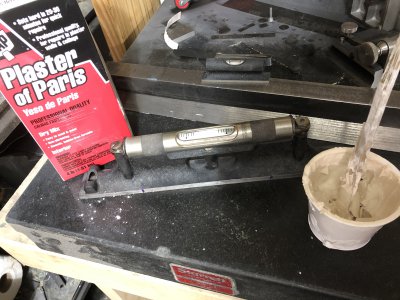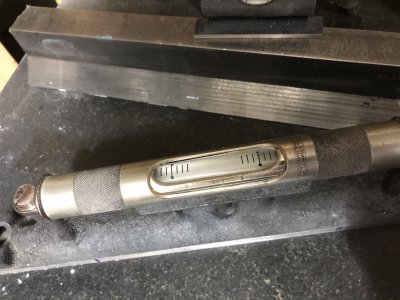- Joined
- Nov 9, 2018
- Messages
- 377
Plaster of Paris is the correct material to hold the vial in a spirit level. The reason why is that plaster is easy to remove WHEN it breaks again. Consider that the reason you’re replacing the vial is because it’s broken. If it broke once, it will break again.
Some have said that bathroom caulk will work. Sure, it will hold the vial, but good luck removing it when you need to replace the vial again. Plaster can easily be completely removed simply by soaking it in water, then a quick rinse and it’s clean and ready to go.
This is a weird level, it’s a Starrett 98 that I bought used, but somebody replaced the vial with a 199 one, so it’s 0.0005” per foot per division.
Some have said that bathroom caulk will work. Sure, it will hold the vial, but good luck removing it when you need to replace the vial again. Plaster can easily be completely removed simply by soaking it in water, then a quick rinse and it’s clean and ready to go.
This is a weird level, it’s a Starrett 98 that I bought used, but somebody replaced the vial with a 199 one, so it’s 0.0005” per foot per division.



